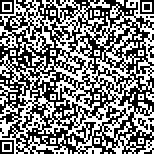| 引用本文: | 黄凯雯,房宵杰,梅林,田涛涛,杜兆鹏.MPE-YOLOv5:面向边缘计算的轻量化YOLOv5手势识别算法[J].哈尔滨工业大学学报,2023,55(5):1.DOI:10.11918/202206056 |
| HUANG Kaiwen,FANG Xiaojie,MEI Lin,TIAN Taotao,DU Zhaopeng.MPE-YOLOv5: lightweight YOLOv5 gesture recognition algorithm for edge computing[J].Journal of Harbin Institute of Technology,2023,55(5):1.DOI:10.11918/202206056 |
|
| 摘要: |
| 针对边缘设备计算和存储能力差的问题,本文对传统YOLOv5模型中用于特征提取的主干网络CSPDarkNet53进行轻量化处理,提出了一种轻量化MPE-YOLOv5手势识别算法,以实现模型在低功耗边缘设备上的部署;针对轻量化模型提取特征较少而导致的难以识别大尺度变换目标和微小目标问题,对M-YOLOv5网络设计添加有效通道注意力机制(efficient channel attention,ECA),以缓解因特征通道减少而导致的高层特征信息丢失的问题;同时增加针对微小目标的检测层,提高对微小目标手势的敏感度;并选用EIoU作为预测锚框的损失函数,以提高模型的定位精度。本文在自制数据集和NUS-Ⅱ公共数据集上验证了MPE-YOLOv5算法有效性,并将MPE-YOLOv5算法与轻量化后的M-YOLOv5算法和原始的YOLOv5算法在自制数据集上进行了对比实验。实验结果表明,改进算法的模型参数量、模型大小和计算复杂度分别是原算法的21.16%、25.33%和27.33%,平均精度可达97.2%;与轻量化模型M-YOLOv5相比,MPE-YOLOv5能够在保持原来效率的同时,使平均精度提升8.72%。因此,所提MPE-YOLOv5算法能够较好地平衡模型的检测精度和实时推理速度,可实现在硬件受限的边缘终端上进行部署。 |
| 关键词: 手势识别 YOLOv5 轻量化模型 通道注意力机制 损失函数 |
| DOI:10.11918/202206056 |
| 分类号:TP391.4 |
| 文献标识码:A |
| 基金项目:黑龙江省优秀青年基金(YQ2021F003);通信网信息传输与分发技术重点实验室基金(FFX22641X005) |
|
| MPE-YOLOv5: lightweight YOLOv5 gesture recognition algorithm for edge computing |
|
HUANG Kaiwen1,2,FANG Xiaojie1,2,MEI Lin1,TIAN Taotao1,DU Zhaopeng1
|
|
(1.School of Electronics and Information Engineering, Harbin Institute of Technology, Harbin 150090, China; 2.Science and Technology on Communication Networks Laboratory, Shijiazhuang 050081, China)
|
| Abstract: |
| In view of the weaknesses of poor computing and storage capabilities of edge devices, lightweight processing was carried out on the backbone network CSPDarkNet53 for feature extraction in the traditional YOLOv5 model, and a lightweight gesture recognition algorithm MPE-YOLOv5 was proposed to realize the deployment of the model in low-power edge devices. Considering the problem that it is difficult to identify large-scale transformation targets and tiny targets due to less feature extraction in lightweight model, efficient channel attention (ECA) mechanism was added to alleviate the loss of information after high-level feature mapping due to the reduction of feature channel. A detection layer for tiny targets was added to improve the sensitivity to tiny target gestures. EIoU was selected as the loss function of the detection frame to improve the positioning accuracy. The effectiveness of the MPE-YOLOv5 algorithm was verified on the self-made dataset and NUS-Ⅱ public dataset, and the MPE-YOLOv5 algorithm was compared with lightweight M-YOLOv5 algorithm and original YOLOv5 algorithm on the self-made dataset. Experimental results show that the model parameters, model size, and computational complexity of the improved algorithm were 21.16%, 25.33%, and 27.33% of the original algorithm, and the average accuracy was 97.2%. Compared with the lightweight model M-YOLOv5, MPE-YOLOv5 improved the average accuracy by 8.72% while maintaining the original efficiency. The proposed MPE-YOLOv5 algorithm can better balance between the detection accuracy and real-time reasoning speed of the model, and can be deployed on edge terminals with limited hardware. |
| Key words: gesture recognition YOLOv5 lightweight model channel attention mechanism loss function |







